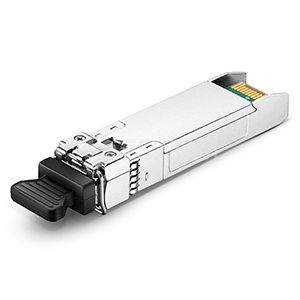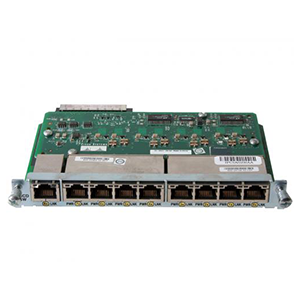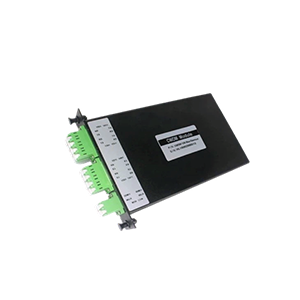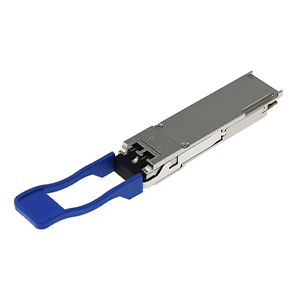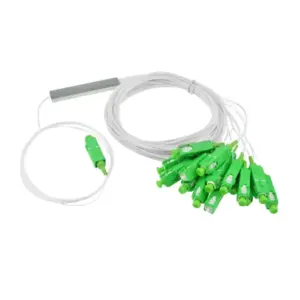Proper cable burial is critical to the safe operation of the power grid. This article will focus on the burial depth of 240V cables. We first outline the relevant safety standards and regulations and analyze their specific provisions on the burial depth of 240V cables. Next, we explore the main factors that affect the burial depth of 240V cables, including safety protection, ease of maintenance and inspection, and the characteristics of different ground environments.
Then, we detail the burial depth of 240V cables in urban environments, including minimum/recommended depths, protection measures for special situations, and treatment methods inside buildings. Finally, we explore the burial depth of 240V cables in rural and suburban environments and analyze how to balance safety and economic factors.
Standard requirements for burial depth of 240V cables
The standard burial depth requirement for 240V cables is usually 0.6 meters to ensure that the cables are protected from external damage and physical interference. In areas with heavy traffic, it is recommended to deepen to 1 meter to protect against vehicles and other pressures. In addition, in special environments such as humid areas, the burial depth may also need to be adjusted to prevent changes in water levels from affecting cable safety. These standards help ensure the stability and safety of power supply.
In the UK, the burial depth of 240V cables is mainly governed by the requirements of the following relevant standards and regulations:
1. IET 18th Edition “Electrical Installation Regulations”:
- This is the latest electrical installation standard in the UK, covering the burial requirements of 240V cables.
- According to this standard, the minimum burial depth of 240V cables under roads is 0.5 meters.
- Under sidewalks, the minimum burial depth can be reduced to 0.3 meters.
2. “Building Regulations”:
- This is the statutory technical standard for construction projects in the UK, which also includes relevant provisions for cable burial.
- The Building Regulations require that the minimum burial depth of 240V cables should be no less than 0.45 meters.
3. National Roads and Street Works Act (NRSWA):
- This regulation stipulates the permits and standards for various types of pipeline works on public roads and streets.
- For the burial depth of 240V cables, it is required to be no less than 0.6 meters.
4. Electricity Safety, Quality and Relay Protection Regulations (ESQCR):
- This is the main standard for the safety of power lines and related pipelines.
- According to ESQCR, 240V cables should be buried less than 0.6 meters below other pipelines when they share trenches with other pipelines.
Based on the above standards, the main burial depth requirements for 240V cables in the UK are as follows:
- Under the road: minimum 0.5m, recommended 0.6m
- Sidewalk: minimum 0.3m, recommended 0.45m
- When sharing trenches with other pipelines: buried below 0.6m below other pipelines
These standards are intended to ensure the safe burial of 240V cables, avoid external damage and interference with other pipelines. In actual projects, reasonable adjustments should be made based on specific environmental factors.
Main factors affecting the burial depth of 240V cables
The main factors affecting the burial depth of 240V cables include geographical environment, soil type and density of surrounding facilities. In urban areas, higher underground pipeline density requires deeper burial to avoid conflicts; in rural areas, the burial depth can be appropriately reduced. Climate conditions, such as water level changes and frozen soil, also affect depth requirements. In addition, areas with heavy traffic require deeper burial to ensure the safety and stability of the cable under external pressure.
When determining the burial depth of 240V cables, the following key factors need to be considered comprehensively:
1. Safety protection considerations:
(1) Prevention of mechanical damage:
- Deeper burial depth can better protect the cable from external mechanical damage.
- Such as damage caused by vehicle running over, engineering construction, etc.
(2) Resistance to natural disasters:
- Deeper burial helps improve the ability of cables to withstand natural disasters such as floods and earthquakes.
- Ensure the safety and reliability of power supply.
(3) Coordination with other pipelines:
- The cable should be separated from other underground pipelines at a reasonable distance to avoid mutual interference.
- For example, high-voltage cables and natural gas pipelines need to maintain a certain vertical spacing.
2. Convenient for maintenance and inspection:
(1) Timely maintenance:
- Reasonable burial depth is conducive to the subsequent maintenance work.
- Too deep burial will increase the difficulty of maintenance and response time.
(2) Positioning accuracy:
- Appropriate burial depth is conducive to the accurate positioning of cable faults.
- Too shallow or too deep may affect the accuracy of cable positioning.
3. Characteristics of different ground environments:
(1) Topography:
- A relatively shallow burial depth can be used in plain areas.
- However, mountainous and hilly terrains usually require deeper burials to enhance protection.
(2) Soil properties:
- Clay soil has a better protective effect on cables and can be buried at a shallower depth.
- While sandy soil and rocky geology require deeper burials to enhance protection.
In short, the optimal burial depth of 240V cables needs to be balanced and optimized between factors such as safety protection, maintenance convenience, and ground environment.
240V Cable Burial Depth in Urban Environments
In urban environments, 240V cables are usually buried at a depth of 0.6 meters to avoid conflicts with other underground pipelines. This depth helps protect the cables from physical damage and external pressure. For areas with heavy traffic, a depth of 1 meter is recommended for enhanced safety. In addition, local regulations and standards must be followed during construction to ensure the stability and long-term reliability of the cables.
In the urban environment of the UK, the burial depth requirements for 240V cables are as follows:
1. Road scenario:
- Minimum burial depth: 0.6m
- Recommended burial depth: 0.75-0.9m
- Protection measures: Use pipelines or metal protective pipes to enhance protection
2. Pedestrian scenario:
- Minimum burial depth: 0.45m
- Recommended burial depth: 0.6m
- Protection measures: Reinforced concrete protection plate or plastic pipeline
In the road and pavement environment of the city, cables require a deeper burial depth and special protection measures to prevent external mechanical damage and improve safety.
3. Inside buildings:
- 240V cables inside buildings can be buried at a shallow depth.
- The minimum depth can be reduced to 0.3 meters, but reinforced cables or protective pipelines are required.
- At the same time, pay attention to the laying path of the cable to avoid crossing or paralleling with other pipelines.
4. Protection under special circumstances:
- In some special environments, such as rivers and railways, a deeper burial depth is required.
- The minimum burial depth should be no less than 1 meter, and reinforced pipelines should be used for protection.
- This can enhance the ability of the cable to resist external interference and natural disasters.
In general, the standard burial depth of 240V cables in urban environments is 0.6-0.9 meters, and corresponding protection measures need to be taken according to specific scenarios. The burial depth can be appropriately shallowed inside buildings. For special locations, the burial depth and pipeline protection need to be increased.
240V cable burial depth in rural and suburban environments
In rural and suburban environments, the burial depth of 240V cables can usually be 0.4 meters to 0.6 meters, because there are relatively few underground facilities and the risk is lower. However, the specific depth still needs to consider factors such as soil type, topography and water level changes. In some wet or rocky areas, it may be necessary to deepen the burial appropriately to ensure the safety and stability of the cable. These requirements help ensure the reliability and durability of power supply.
In rural and suburban environments in the UK, the burial depth of 240V cables can be relatively shallow, mainly reflected in the following aspects:
1. Fields and rural areas:
- Minimum burial depth: 0.45 meters
- Recommended burial depth: 0.6 meters
- Protection measures: Use simple plastic pipes or protective pipes
2. Wooded areas and hilly areas:
- Minimum burial depth: 0.6 meters
- Recommended burial depth: 0.75-1.0 meters
- Protection measures: Strengthen the protective performance of pipes or protective pipes
In these environments, due to relatively less surface activity, cables can be buried at a shallower depth. This will not only reduce the cost of the project, but also facilitate subsequent maintenance. However, safety issues should also be taken into consideration, especially in complex terrain environments such as mountainous areas and forested areas. Properly deepening the burial depth and taking enhanced protection measures can effectively reduce the risk of cable damage.
When weighing safety and economy, the following strategies can be adopted:
In relatively flat areas such as fields and pastures, a shallower burial depth of 0.45-0.6 meters can be used to reduce project costs.
For scenes with complex terrain such as mountainous areas and forested areas, the burial depth needs to be increased to 0.75-1.0 meters, and reinforced pipelines or protective pipes need to be used.
For some special locations, such as intersections and under bridges, the burial depth still needs to be increased to more than 1 meter to ensure cable safety.
In general, it is feasible to appropriately reduce the burial depth of 240-volt cables in rural and suburban environments, but it is necessary to fully evaluate safety and take appropriate protective measures according to actual conditions.
Summary
Ensuring the reasonable burial depth of 240-volt cables is the key to power grid construction and maintenance. As a well-known power product supplier in the industry, our company has long been committed to providing customers with high-quality power infrastructure solutions. We have rich practical experience in cable engineering and can provide you with professional design and construction guidance.
Our products and services fully comply with major domestic and international standards, and have reached the industry-leading level in terms of safety, reliability and economy. At the same time, our team of engineers will tailor the best 240-volt cable burial solution for you according to your specific needs. Contact us now to learn more.
FAQ on how deep to bury 240V cables
The minimum recommended burial depth is typically 18 inches (450 mm) for non-metallic sheathed cables.
Yes, burial depths may vary based on the cable type and local regulations; for example, armored cables may require less depth.
Shallow burial increases the risk of damage from surface activities, such as digging or landscaping.
Yes, local electrical codes and regulations can dictate specific burial depths, so check with local authorities.
Use warning tape above the cable to alert anyone digging in the area, and consider using conduits for additional protection.
Yes, but additional measures, such as using protective conduits, may be necessary to prevent damage.
Yes, it’s important to contact local utility providers to avoid damaging existing underground infrastructure.
Use a depth gauge or consult a professional for guidance on proper burial depth.
Insufficient burial depth can lead to cable damage, potential electrical hazards, and service interruptions.
Yes, follow local electrical codes and manufacturer guidelines for safe installation practices.


